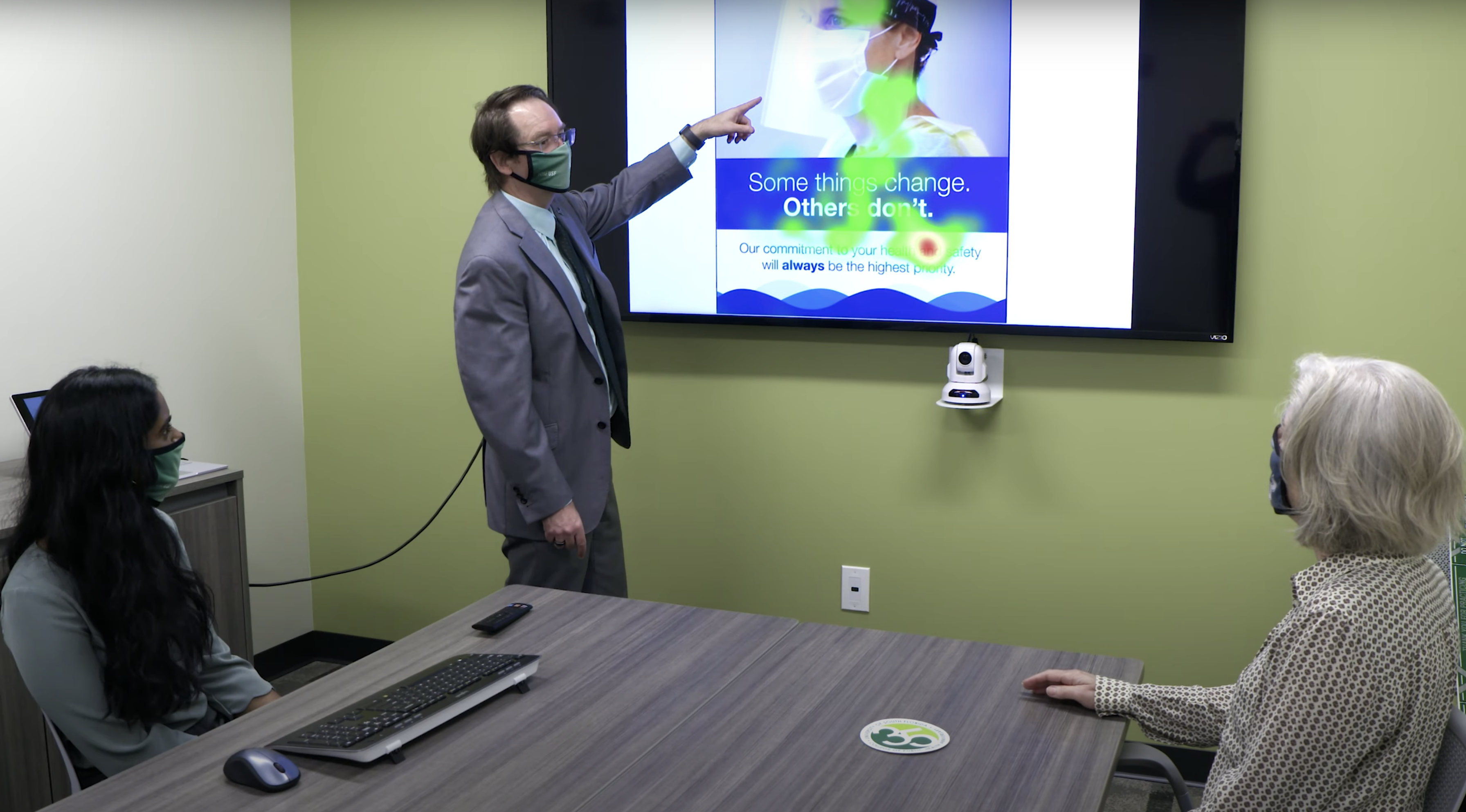New study uses facial tracking tools to analyze response to public health advertising

Fears surrounding COVID-19 have led to homebound lifestyles across the globe, but a team of USF researchers are studying the way those homebodies are responding to advertisements that encourage them to seek in-person health care without any fear.
The team, consisting of three professors from the College of Business, the College of Public Health and the Zimmerman School of Advertising and Mass Communications, received a $25,000 grant as a part of the third round of the COVID-19 Rapid Research Response Program to evaluate how medical patients from BayCare Health System respond to advertisements related to resuming appointments and seeking emergency health care services during the pandemic.
Using iMotions, an emotion recognition software that analyzes facial expressions and tracks eye movements to evaluate engagement and quantify emotional responses, the team is working to evaluate facial expressions in reaction to COVID-19-related TV and print advertisements in order to increase the accuracy and effectiveness of COVID-19-related messaging in the health care system.
The goal of the study is to determine what types of advertisements are best able to convince people to resume normal appointments with physicians and other health care providers without fear of contracting COVID-19, according to Robert Hommand, director of USF Center of Marketing and Sales Innovation.
“[There’s always a] question revolving around ‘How do people really receive a message?’ For example, I can ask you what you think, but do I really know how you feel? That is the question,” said Hommand.
Patients that participate in the study will be chosen by BayCare health professionals to video call with members of USF’s research team, according to Rahel Zemen, graduate student at the College of Public Health and research assistant for the project.
“It is very cool and convenient, because we get to do all of this new research remotely and virtually. So, we get to connect with patients from all different backgrounds,” said Zemen.
During the video calls, participants will be recorded while being shown a variety of TV commercials, print or online marketing ads while implementing the iMotions face and eye-tracking technologies.
“We are able to collect the information by web, with people being at home, or work, or wherever they happen to be. But, then we still use our lab assets to do the analysis of the people,” said Hommand.
Zemen said the advantage of collecting neuromarketing data helps garner a better understanding of the population of health care patients who reside in the Tampa Bay area.
“We can now reach so many more people, of so many different backgrounds. Not even just limited to the country, I am sure we can expand throughout the world,” said Zemen. “It really shows how much further we can go in terms of getting more accurate representation of how people perceive health messages.”
Part of the research aims to save advertising costs by more effectively producing and directing ads to audiences that will receive them well based on the research.
“If we are able to have better messaging and communicate better, then we are going to save money because there is only a limited amount of money that we can spend,” said Hammond. “What we will be able to do is have more effective messages and that will reach more people and we’ll have better health results.”
While improving health care advertising, Hommand said the public health care system will also be impacted by an increase in efficacy when resolving concerns about resuming health care visits during the pandemic.
With more effective messages and a broader reach, Hommand said more patients will be compelled to receive health care, leading to an overall healthier population.
The research is expected to conclude in January and will be published in spring 2022.
“It’s really about how these messages impact [the community’s] level of comfort at seeking care in the hospital or in the health care provider’s setting,” said Hommand.
“It is not too far-fetched to say that our goal is to save lives.”
Additional reporting by Jorgelina Manna-Rea and Audra Nikolajski.






